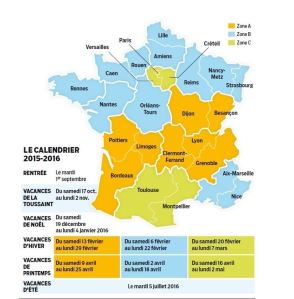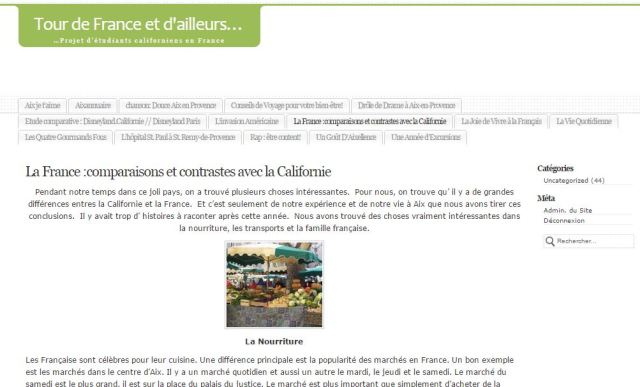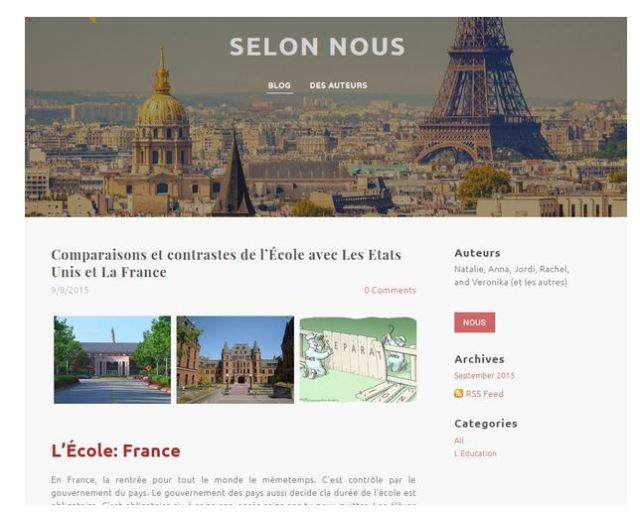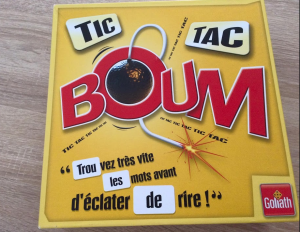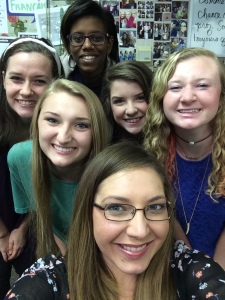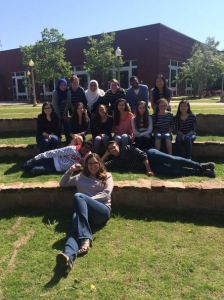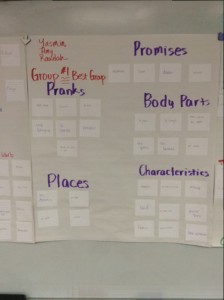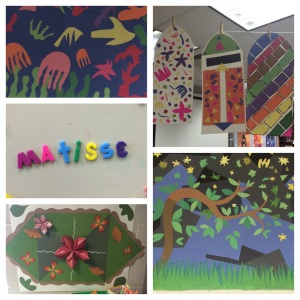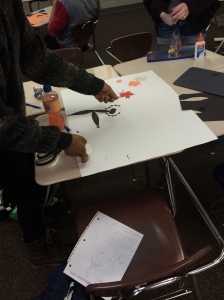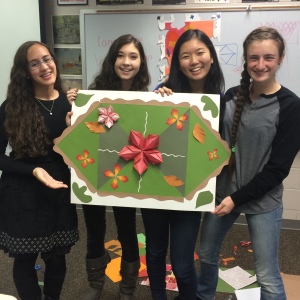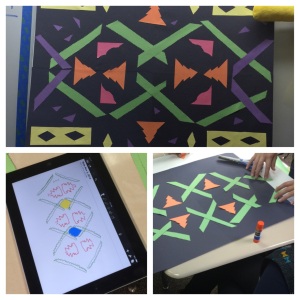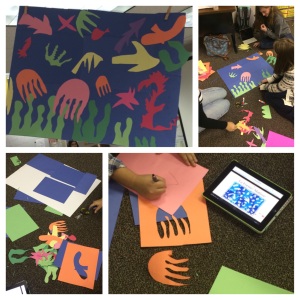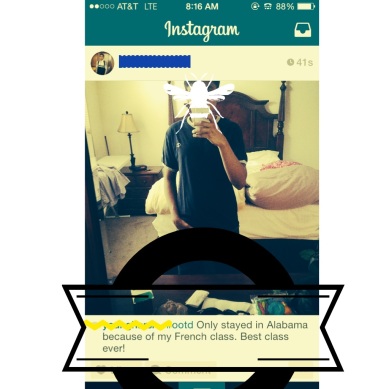-
Recent Posts
Archives
Categories
Meta
Tags
- AP French
- art
- back to school activities
- benefits
- books
- book study
- BYOD
- classroom activities
- Clifton
- collage
- culture
- cut-outs
- Dave Burgess
- Degas
- Dropbox
- education
- escargot
- Fantôme de l'Opéra
- food
- foreign language
- foreign language education
- France
- French
- French Education
- French learning
- French teacher
- French Teachers
- game of thrones
- get to know you activities
- Google Drive
- Google Slides
- IB French
- images
- impressionism
- Impressionist
- iPad
- jeu
- lefrancaispartout
- lesson
- linky party
- magnets
- matisse
- McDo
- messages
- motivation
- National French Week
- painting
- photo challenge
- pln
- quotes
- read
- review
- review game
- Seniors
- september
- social media
- Spanish
- speaking French
- Spring Fling
- strengths
- strengthsfinder
- Stripes
- student
- students
- Tacky Day
- teach
- teacher
- teacher tech
- teaching
- Teaching with technology
- Teach Like a Pirate
- Technology
- travel
- Tuez la tortue
- voxer
Blog Stats
- 26,684 hits
Le Mois de l’histoire des femmes
To celebrate Women’s History Month, my upper level French classes at Spain Park High School are researching francophone (French speaking) women in the domains of business, scientific research, and civil service. Keeping their own interests and passions in mind, the students chose their “Experte Francophone” from this database of women from all over the world. These women are current professional lawyers, professors, entrepreneurs, accountants, human rights activists, and nutritionists, just to name a few. They live in Haiti, France, Ghana, Senegal, Switzerland, and lots of other countries where French is an official or important language.
I’m so excited about this assignment because my students are writing emails to these experts in hopes of a response which we can share with the class during the presentations. They’re writing real messages to real people, so the stakes of their understanding their professions and making sure the language they use makes sense are much higher! Not only is this great practice for the email writing portion on the AP exam, but it’s a tangible way to show my students the reach the French language has in the world and in business. I also hope it inspires my students- these women are successful because they have worked hard and made education a priority. They are passionate about the work they do, whether it be the study of rain forest ants or sustainable architecture.
Already today one of my students came to me between classes to tell me the woman she contacted responded to all of her questions! This student was so excited, and I can tell she is really engaged! Maybe one day my students will open their inboxes to messages from high school students hoping to answer questions for a research project about them!
Posted in AP, Education, email, French, Writing French
Tagged AP, AP French, education, email, foreign language, Francophone, French, French Education, student
Leave a comment
Jusqu’à la dernière cloche #lastbell
It is crunch time! Just a few more weeks until the official #lastbell of the 2015-2016 année scolaire.
I mostly teach upper level French classes, including AP French Language and Culture and IB French B Standard Level, so our last class is marked not by graduation or by the last day of school, but by the date of the examen officiel! For AP, that means le 10 mai. In a perfect world, all of my students would be in my classroom every day leading up to those dates, but around here, my students start missing almost every day starting le 2 mai. French isn’t the only upper level class my students take! (You should see the exam schedules for these students- it is INTENSE!)
How can I make the month of AVRIL really count? How can I make the most of the days between May 2 and the official exams when I won’t have everyone every day? What can we do that is meaningful AFTER those official exams so that we aren’t doing nothing for a week or two before the end of the school year?
Quant à AP: Saturday AP French Practice Exam
The AP French exam is L-O-N-G. It contains 6 different sections and assesses all the skills of knowing a language. The problem is that most of the sections take longer than 49 minutes to complete, so as much as we can practice in class, there’s no way to really simulate actual testing conditions. I can tell and tell and tell my students that testing fatigue is a real thing when it comes to this exam, but there’s nothing like working one all the way through to get them to believe me so they’ll come prepared with some serious mental fortitude (and SNACKS).
I decided it would be best for my students if they could get a true feel for the test in its entirety and offered a practice test on a Saturday morning. Not for a grade. Not for bonus. Not for anything EXTRA other than practice and feedback. Out of 21 students between two high schools, I had 7 show up at 8 am for a four hour practice exam. That’s 1/3 of my AP students. These are kids who know what dedication is. These are students who are begging for their teachers to work until the last bell. These are kids who remind us that they DESERVE our best until the very end!
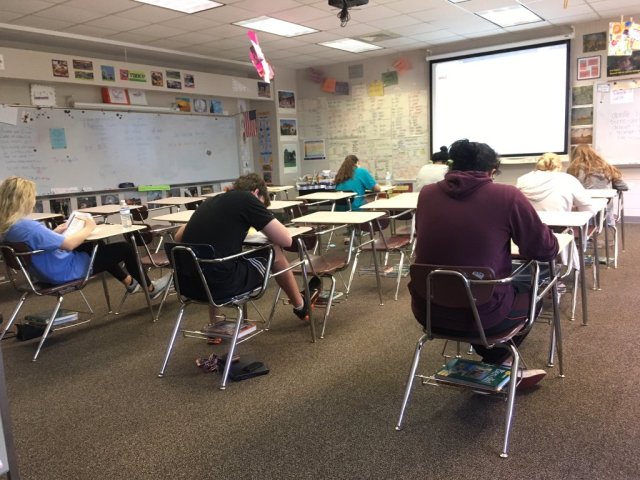
These élèves are doing WORK on a Saturday morning! A little practice AP French exam- not a bad way to spend 4 hours on a beautiful Saturday morning!
After assessing those practice exams, I learned that there are many common words that come up all over the exam that the students should know, but often misunderstand. So, I made this Quizlet set of those words and shared with my students on our Google Classroom page. I like that it’s something all of my students can access whether they are physically in the building or not. (I also learned that my students CAN DO some amazing things in French. I love the changes that the College Board made to this exam a few years ago because it really gives students the opportunity to show what they can do rather than highlighting what they can’t. These kids have come a seriously long way! Je suis tellement fière d’eux!)
As for after the exam, we have plans to finish watching a film that is connected to one of the themes we studied this year. It’s called Les Intouchables. We only watched a clip of it a few weeks ago, but the kids have been BEGGING to finish it. It’s an engaging film, and I can’t wait to experience the rest of it with them. It will spark great conversation about handicap accessibility, class, race, family expectations, and friendship. EN FRANÇAIS bien sûr. 🙂 We also have plans to do our yearly art project- this year we will study le pointillisme.
Et vous?
*Update! My students took the AP French exam yesterday, and although I know they felt overwhelmed (it would be sort of crazy if they didn’t), I did get some good feedback from students.
There were a ton of vocab words from that quizlet and I used some in my writing so merci beaucoup for that.
THANK YOU SO MUCH for such a great year. You taught all of us so much more than French. Thanks for your daily investment in us, I really appreciate it.Je t’aime!
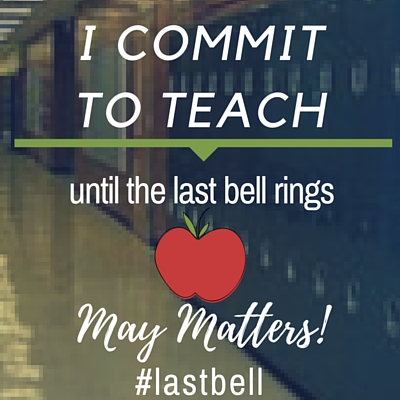
Posted in Education, French, Uncategorized
Tagged AP French, education, foreign language, French, French Education, last bell, teaching
Leave a comment
Blog posts on blog posts on blog posts!
This year, our school has 3 school-wide goals. Here’s the 3rd goal:
This year, as a district, we will be focusing on two of the eight science and engineering practices from the Conceptual Framework of the Next Generation Science Standards:
#7–Engaging in argument from evidence
#8–Obtaining, evaluating and communicating information
My PLC looked at this goal and discussed how to apply this to our foreign language classes. We know we have to provide lots of different types of input in order for our students to get new information and give them opportunities to DO something with the information they’ve received. This week in my AP French class, I kept this in mind while designing a lesson about comparing and contrasting schools in France and the US.
One of the sections on the AP French exam requires students to do an oral presentation comparing and contrasting a certain aspect of life in our community to a Francophone community. For this unit, it was important that we learn something new about a certain aspect (EDUCATION) from several sources and also focus on strategies to compare and contrast.
I started by showing my students this map. It happened to be September 1st when we did this activity, so the only question I asked was “Why is today an important day in France?” I was hoping they would find today’s date next to “La Rentrée” and then use the context of the map to figure out what it meant. (they did!)
As they were answering that question, they also discussed the dates of vacations. I heard them saying things like “Whoa, a 2 week break in February would be awesome!” I could tell they were obtaining and evaluating information. Then as a class we discussed the similarities and differences in our school calendars, the nomenclature of our breaks (this map calls the break in December “Christmas Vacation”), the fact that all schools in France start and end on the same day, etc.
The students then watched this video from 1jour1actu.com. It talks about how education is obligatory and secular in France, among other topics.
Then in groups, the students got together and made Venn Diagrams comparing and contrasting education in France to education in the US. They could use their Chromebooks to access the web to clarify any points or to look things up. (For example, they looked up the laws in Alabama about how long a student must stay in school.)
In the lower levels, we haven’t done a lot of practice on writing comparisons and contrasts, so I knew we weren’t ready to really DO anything yet with the new information we learned from the graph and the video. Luckily, I found this blog written by American college students who studied abroad in France. One of their posts compares and contrasts 3 aspects of life in France to the US: food, transportation, and family. We read the blog post together and looked at how the writers introduced each topic, added images, and used certain terminology when introducing their ideas.
Using the blog as a sort of template, the students then were grouped together to write a blog post together that compared and contrasted education in the US and France. They wrote their first drafts using a shared Google Doc, and then Natalie, one of my students, actually created a new blog called Selon Nous which means “According to Us.” (Last year she had a fictional blog called Selon Moi- so great to see it realized!!). After a revision and some help from me, the students all uploaded their posts (even my students from SPHS!) onto the class blog, or in other words, they communicated information.
Stay tuned to Selon Nous for more posts by my awesome AP students!
Posted in Chromebook, Create, Education, French, French Tech, Teacher Tech, Teaching, Writing French
Tagged blog, education, FL education, French, French Education, la rentrée, student blog
Leave a comment
Tic Tac Boum
This morning I had to drive my husband to work, and I thought it was going to totally throw off my plans. Usually I arrive at school at least an hour before the first bell because I do my best thinking in the morning. Usually!
Today I was reminded that a little spontaneity and the willingness to change plans can make for a very very good class.
I’ve been giving my students little 3-5 question homeworks lately just to keep them engaged a bit at home. Last night I assigned them this picture (which I found from the Google Drive folder posted on the Facebook page called French Teachers in the US– you should request to join it because those people are AMAZING- that’s a whole other post).
Anyway, I assigned them this picture and asked them easy questions (in French).
- What do you think this picture is? What clues lead you to that conclusion?
- List 3 french words you know.
- Define 1 word you don’t know.
And that was it- that was all I was going to do with it. I wanted them to interpret some realia. But then I got to school later than usual and had to come up with something on the fly. How can I extend this into today?!?!
So I went to YouTube and found this video of 3 friends playing the game as they explain the rules.
As the students watched, I asked them to write down any words they understood. (So far, each level has done a better job at this! phew!) Then we discussed the words they understood and talked about how although they didn’t know exactly which words were always said, they all understood that it was a video of friends playing and explaining a game. I also had them guess what they thought the rules were and what TIC TAC and BOUM mean. Then we looked at a written explanation of the rules and compared them to what they understood from watching the video. They were all very very close!!
Two oral questions I asked them to answer as a group as they looked at the rules were:
- Qu’est-ce que ça veut dire “la manche”?
- Quelle est la règle avec le son et l’orthographe?
It took them a few minutes to figure out, but they used the context of the rules to come up with the right answer.
Next, the students got online and found French board games and shared links (we use Google Classroom) to the rules and to videos of advertisements or of people playing them.
The kids really wanted to try playing, but of course I don’t actually HAVE this game, and I only just learned the rules this morning! So I decided to have the groups “play” after they got done posting their comments. They were to come up with 2-3 words that contain different sounds which I wrote on the board. For example: si, pos, cro, poss, yé, mai, mat, tou. It was great seeing them working together and coming up with words!
AND THEN THE BELL RANG! And I was glad it was such a good day of learning!!
(PS- I used this same lesson with French 3, IB French, and AP French- just made adjustments for the levels!)
Congratulations, Seniors!
Félicitations!!!! Congratulations, Seniors!
This group of girls have been with my since my very first day at Hoover High School. They were all just freshman students in French 1. Most of them were planning to only take two years of French, but luckily for me, they all stayed and did 4! I’m proud of how much they’ve learned and how much they’ve matured. It’s been my honor and pleasure to teach them and get to know them. They truly are a special bunch!!!!
Spring Fling 2015
It’s been a while since I’ve posted anything. When this happens, I usually post something fun and silly just to get back into the flow of blogging. Here are some silly pictures from Spring Fling 2015.
TACKY DAY- This is typically one of my favorite dress up days of the year. I raided my grandmother’s items for this awesome outfit- note those clogs. Also, I wore those braids all day!! AND it was my 29th birthday!
DYNAMIC DUO- My third period class and I MAY have taken this one to the extreme. We decided DUO was too small for us, so we ALL wore stripes!! I was so excited to see EVERYONE wear stripes. It made my heart sing! #FrenchFam
Vocabulary’s CODE
When my students first learn they will be reading a novel written all in French, they at first feel very overwhelmed. Luckily, I’ve been talking this book up since they very first day of school in August, so even though they’re nervous, they are excited to read Le Fantôme de l’Opéra by Gaston Leroux.
Each year I teach this novel, I know I’ve done a better job than the year before. This year, my focus is to improve the way I teach the vocabulary. As a guide, I’m using the strategy proposed by my school’s Literacies team called Vocabulary’s CODE which comes from the book Core Six. CODE stands for: C- Connect, O-Organize, D-Deep Process, E-Exercise
CONNECT– For the first chapter, I chose 30 words from the text. The students defined the words on their own or with a partner. Then we discussed them as a class, looking at each word individually. Were there any we had already learned from other units? What are the cognates? False cognates? What part of speech are the words? Is there an image that represents the word? We practiced saying each aloud and in French.
ORGANIZE– This is an important step that in the past I have skipped. I wanted to make sure my students really knew these words before we started reading. It can be 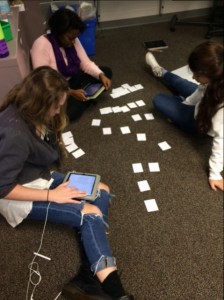 overwhelming to dive into a book, but if you have the stability in the words, it’s much more manageable. I divided the class into groups of 3 and gave them each 30 note cards. I gave my directions in French, and they were to divide the 30 words and cards among the three group members- thus each member would have 10 words to copy from the list. When they had all the words copied, they would spread them all out and determine at least 4 categories to group the words into. They could refer to their list on their iPads to check the definition of each word. Then, they named the categories and attached them to a poster. This way the students had to think about each word and how it might relate to the others while discussing and agreeing with their groups.
overwhelming to dive into a book, but if you have the stability in the words, it’s much more manageable. I divided the class into groups of 3 and gave them each 30 note cards. I gave my directions in French, and they were to divide the 30 words and cards among the three group members- thus each member would have 10 words to copy from the list. When they had all the words copied, they would spread them all out and determine at least 4 categories to group the words into. They could refer to their list on their iPads to check the definition of each word. Then, they named the categories and attached them to a poster. This way the students had to think about each word and how it might relate to the others while discussing and agreeing with their groups.
Deep Process: As we read, we discuss how we see the words in context. We talk about how the words may change based on tense or gender, how it is being used to drive the plot, or what symbolism the word carries for the story. With some words like feuilleter, we imagine it in our minds or I demonstrate it for the class. We also use it in new contexts at the end of the book when the students create pages for an alphabet book. They illustrate the words and create an original sentence that Gaston Leroux may use in an edit of the book.
Exercise: As we continue the book, the words from earlier chapters are often used again and again. I have made quizlet sets online for some of the word lists, and sometimes we play games as a class, or the students practice on their own. We also play Tuez la Tortue with the words.
As evidenced by the first vocabulary quiz, this strategy seems to be working. They all did well on the assessment (matching words to pictures, matching words to English definitions, determining which word doesn’t belong based on meaning), and have been understanding the words in the context of the story. I have high expectations for the level of comprehension my students will have this year with Fantôme!
Matisse Cut-Outs!
Each year during National French Week, I like to do a big art project with my students. Last year we studied Impressionism, and each student created a painting in that style. This year, I decided to teach a unit about one of my favorite French artists, Henri Matisse.
My inspiration for this project comes from my study abroad in France in 2008. I spent the first few weeks in Cannes before going to Paris for most of my semester. While in Cannes, a few friends and I took a train to Nice and visited the Matisse Museum. (It’s totally worth the hike up many hills from the train station). While I was there, I saw many of his paintings, but I was most struck by something new I learned about him- that late in his life he started making paper collages. Since I started teaching, I’ve been trying to think of a meaningful way to share my love for Matisse with my students. I think I found a way!
I’ll share my unit here. I spent a whole week on it! (I teach French 3 and 4, so most of the instruction, discussion, and presentation can be done all in French, but I think it’s very easy to adapt to levels 1 and 2). Here’s the general breakdown:
lundi: I showed this Google Slides presentation. It’s in French and tells about Matisse’s life (very brief). I also found some wonderful videos of Matisse working. Mostly, the presentation explains the different elements of Matisse’s cut-outs. This vocabulary is really the heart of the project as students had to use it at the end to discuss their collages. There are a few examples of Matisse’s collages I used to reinforce the vocabulary and to really show the different elements of his work.
After the presentation, I divided students into groups of 3-4. They had just a few minutes at the end of class to look online for more inspiration and to start coming up with a plan. Every group had an idea of what they were going to do- most of them sketched plans on their iPads or in their notebooks.
mardi et mercredi: CREATE! I gave students two class periods (49 min each) to work with their groups on their collages. We listened to Yelle while they worked. Here’s what I provided the students:
- a full size poster board
- child sized scissors
- regular old construction paper
- glue
I told the groups on Monday to think about what other materials they could bring to accent their work. Here are some items they brought in to supplement:
- adult sized scissors
- glitter
- scrap-booking paper
- wrapping paper
- tissue paper
- Origami paper
- other colors/weights of construction paper
jeudi: Gallery Walk! I hung all of the collages from all the classes around the room and numbered them. I’ve had the vocabulary for the elements of Matisse’s work on the board all week, so using that as a guide, I modeled how to analyze a collage. I talked about how the collage used (or didn’t use) each element. Then, the students paired off and started going around the room and analyzing all of the collages. I walked around and listened to them using the vocabulary and really being interested in the other collages. As they were analyzing each collage, they had to decide which was their favorite! Students then returned to their seats to start working on their essays. While they were writing, I walked around the room and tallied their votes for their favorite collage (the winning group members received a page of Eiffel Tower stickers).
vendredi: In-Class Writing day. I gave the students a class period to write an essay about their experience. Here’s a copy of the directions. Briefly, they had to give a title to their collage, discuss why they liked or didn’t like this unit, tell which collage was their favorite, then using the vocabulary words, discuss how their collage incorporated (or didn’t incorporate) the elements of a Matisse-style collage. I’ve read what the students have written, and it’s very clear they understand the concepts of this unit!
Overall, this unit was incredibly engaging for the students and they really did make some beautiful pieces. I’m hoping that they will never forget Henri Matisse!

